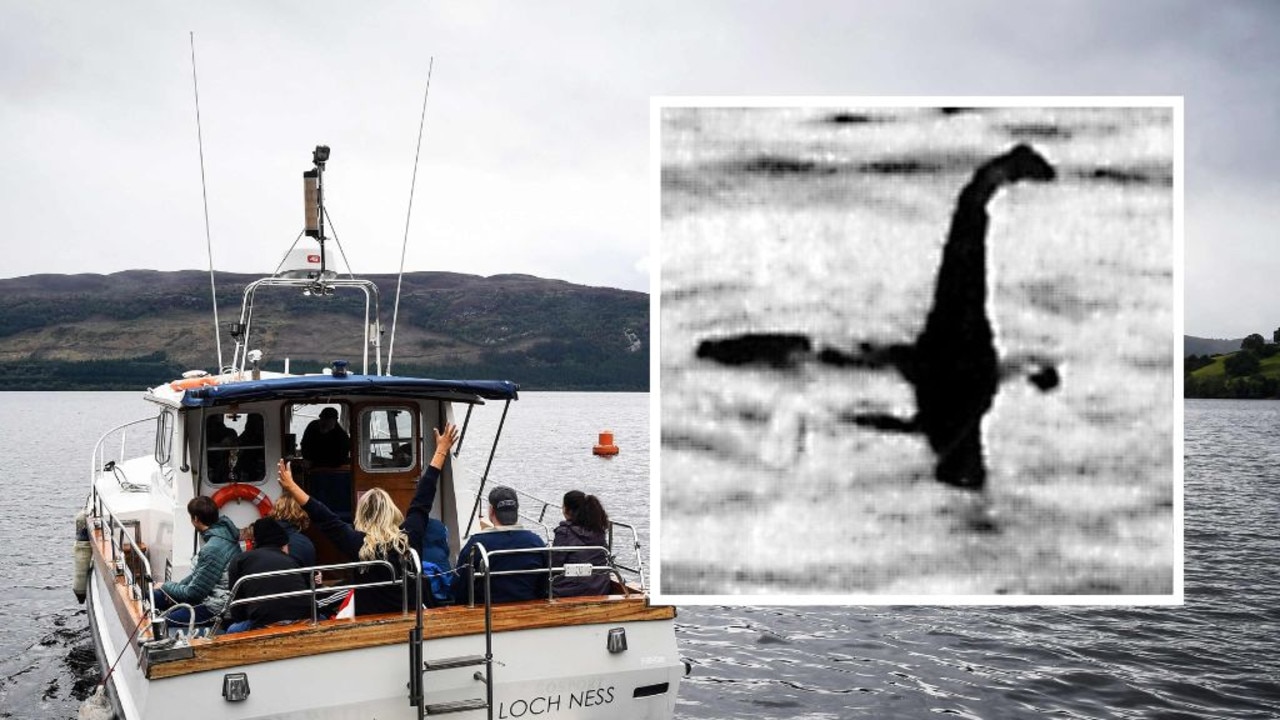[ad_1] Loch Ness monster hunters have heard noises they hope come from the fabled beast during the biggest search at the Scottish lake in 50 years.
[ad_1]
Loch Ness monster hunters have heard noises they hope come from the fabled beast during the biggest search at the Scottish lake in 50 years.
Enthusiasts from around the world have descended on Loch Ness, near Inverness, deploying drones with thermal scanners, boats with infra-red cameras and an underwater hydrophone in hopes of unravelling a mystery that has captivated the world for generations, AFP reported.
One enthusiast picked up mystery sounds while dangling a hydrophone — an underwater microphone — into the lake from a boat.
“When we were testing the equipment we heard four distinctive noises,” Alan McKenna told The Sun.
“We didn’t know where it was coming from. We didn’t know the origin, which is quite exciting.”
Mr McKenna, of Edinburgh, was among 200 people from across the globe joining the search for Nessie over the UK’s bank holiday weekend.
“We’ve had people coming from all over the world,” he said.
“We’ve had people from Spain, France, Germany and we had a Finnish couple. We’ve had news teams from Japan, Australia, America and it has been really good.
“We’ve all kind of banded together. It’s been fantastic.”
Paul Nixon, the general manager of the Loch Ness Centre, said: “I believe there is something big lurking in the depths of Loch Ness.
“I don’t know what it is but I reckon there’s something down there.”
Mr Nixon told AFP there wasn’t “a corner of the globe you can go to where people haven’t heard of Nessie”.
“It is still one of our biggest questions – what is the Loch Ness monster,” he said.
“I don’t know what it is. All I know is that there is a big something in Loch Ness. I have seen sonar scans of objects the size of transit vans underneath the water moving.”
Tatiana Yeboah, 21, a tourist from France, whose visit coincided with the search, said it had been a lifelong dream to visit Loch Ness.
“It could be myth, it could be real – I like to believe it is something halfway in between,” Ms Yeboah said.
Ms Yeboah said she would keep her eyes firmly on the loch during her visit, just to make sure she didn’t miss anything.
The searchers believe the thermal scanners could prove crucial in identifying any strange anomalies in the murky depths.
The hydrophone will allow the searchers to listen for unusual Nessie-like underwater calls.
Stretching 36km and with a maximum depth of 240m, the freshwater loch is the UK’s largest lake by volume.
Reports of an aquatic monster lurking in Loch Ness date back to ancient times, with stone carvings in the area depicting a mysterious beast with flippers.
The earliest written record of the creature dates back to AD 565 in a biography of the Irish monk, Saint Columba.
According to the text, the monster attacked a swimmer and was about to strike again when Columba commanded it to retreat.
More recently in May 1933, the local Inverness Courier newspaper reported a couple driving along a newly constructed lochside road seeing “a tremendous upheaval” in the water.
There are now more than 1100 officially recorded Nessie sightings, according to The Loch Ness Centre in Drumnadrochit, near Inverness.
The monster brings in millions of pounds in tourism revenue to the Scottish economy each year.
Over the years, scientists and amateur enthusiasts have tried to find evidence of a large fish such as a sturgeon living in the depths of the loch.
Some have suggested the monster could be a prehistoric marine reptile like a plesiosaur.
In 1972, the Loch Ness Investigation Bureau undertook the biggest search to date but returned empty-handed.
In 1987, Operation Deepscan deployed sonar equipment across the width of the loch and claimed to have found an “unidentified object of unusual size and strength”.
In 2018, researchers conducted a DNA survey of Loch Ness to determine what organisms live in the waters.
No signs of a plesiosaur or other such large animal were found, though the results indicated the presence of numerous eels.
“The weekend gives an opportunity to search the waters in a way that has never been done before, and we can’t wait to see what we find,” Mr Nixon said.
[ad_2]
Source link



COMMENTS